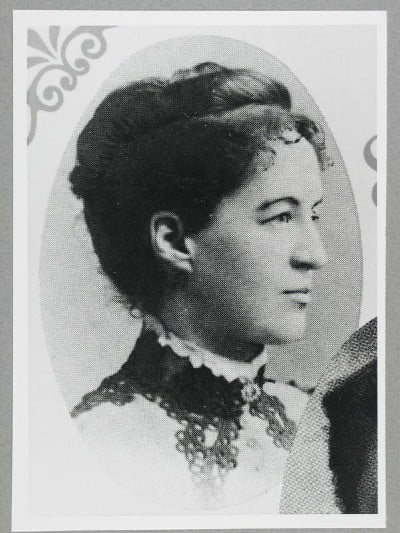Dr. Constance Stone

b. 1856 – 1902
Doctor
“We were encouraged to make up our own minds as to what we wanted to do” Constance Stone (De Vries, 2001)
Dr. Emma Constance Stone was an educator, a woman of science, a social reformer and leader of the women doctors in Melbourne who founded the Queen Victoria Hospital for women and children in 1899, the third Pro Femins A Feminis, for women by women hospital in the world.
Dr Stone broke through the gender barriers to become Australia’s first woman doctor in 1890 by travelling to America for her medical degree and then on to postgraduate studies and hospital training in Canada and England. Dr Stone returned to Melbourne, a highly qualified doctor with the unique experience of studying at women’s medical colleges and working alongside women doctors who ran hospitals exclusively for women and children.
Dr Stone’s medical practice focussed on treating poor women and children in Melbourne’s slums and at the medical dispensary she established with her sister Dr Clara Stone and cousin Dr Mary Stone and her husband Rev Dr Egryn Jones at the Welsh Church on Lonsdale Street.
Improving the rights of women and girls was a priority for Dr Stone who believed that women deserved a say in the laws that governed their lives (Hamer, 2016) She was a well-known speaker on the topic of women’s suffrage, was vice president of the Victorian Women’s Franchise League, co-founded the Vigilance League to protect the rights of young girls, lobbied to raise the age of consent for girls from 12 to 16 and to eradicate child prostitution.
Dr Stone was a member of the United Council for Women’s Suffrage in 1894 (Murnane, 2015) . Systemic prejudice that excluded women medical graduates from hospital residencies was the catalyst for Dr Stone to invite Melbourne’s women doctors to form the Victorian Medical Women’s Society in March 1895. The organisation aimed to improve medical education, training and work options for medical women (Jones B. , 2017) . The Society continues and is the oldest professional body for women doctors in the world.
By 1897 Dr Constance Stone’s medical clinic had outgrown the St David’s Hall at the Welsh Church and a committee of suffrage allies organised the Queen’s Shilling Fund to raise the capital required to open the Queen Victoria Hospital for women, run by women doctors in 1899. A week after the hospital opened, Dr Constance Stone gave birth to her daughter Bronwen and not long after was diagnosed with tuberculosis. Constance Stone died at her sister’s home in St Kilda in December 1902. She was 46.
Dr Constance Stone is celebrated in the annual Constance Stone mass at the Welsh Church.
This Biography was written by Barbara Wheeler – Feminist Historian in Residence at the Queen Victorian Women’s Centre in consultation with Her Place Women’s Museum
Commemoration
Constance Stone Lane, located in the bustling QV Melbourne shopping precinct in the heart of Melbourne, offers visitors a unique blend of history and modernity. Spanning an entire city block cornering Swanston, Lonsdale, Little Lonsdale and Russell Streets, the lane was named in 2003 to honour Dr. Constance Stone, Australia’s first registered female doctor and founder of the Queen Victoria Hospital for Women. As you explore the laneways of QV, you’ll pass a pavilion of the historic Queen Victoria Hospital, now home to the Queen Victoria Women’s Centre—a vibrant hub supporting women and gender-diverse people through creative programs and community resources. The QV complex itself is a quintessential Melbourne experience, where charming laneways lead to an eclectic mix of food, fashion, and culture. Visiting Constance Stone Lane allows you to connect with Melbourne’s rich history while enjoying the lively atmosphere of one of the city’s premier destinations.
Photo: Portrait of Constance Stone (1852-1902), c. 1890. Medical History Museum, University of Melbourne; MHM02914
References
De Vries, S. (2001). Great Australian Women. Sydney: Harper Collins.
Hamer, M. (2016). Constance Stone and Pioneering Women of Australian Medicine. Melbourne:
MacMillan Publishing Aust Pty Ltd.
Jones, B. (2017). The Melbourne Welsh Church. Melbourne: Anchor Books.
Murnane, M. (2015). Honourable Healers: Pioneering Women Doctors: Elizabeth Blackwell,
Elizabeth Garrett Anderson and Constance Stone. Melbourne: Australian Scholarly
Publishing.

